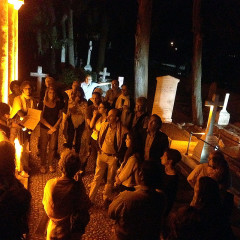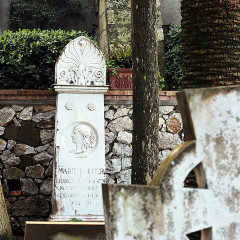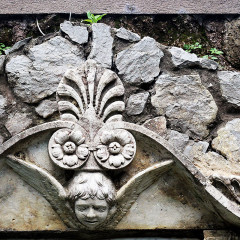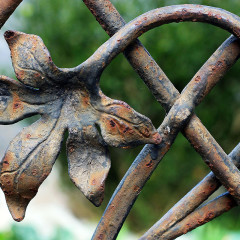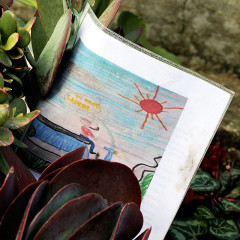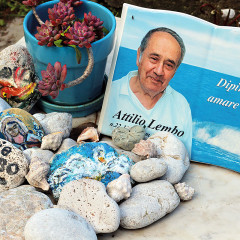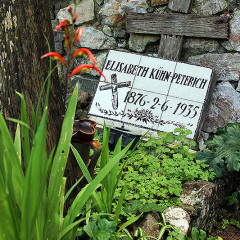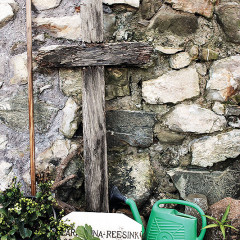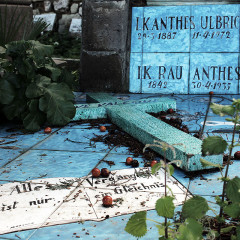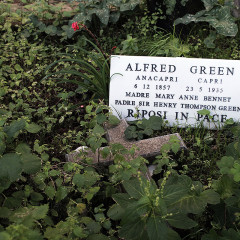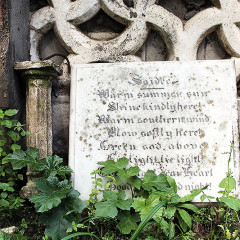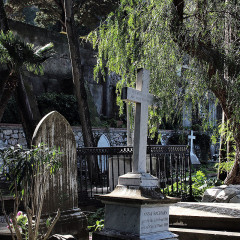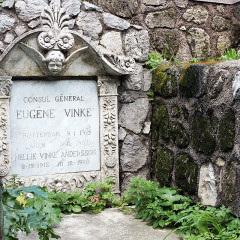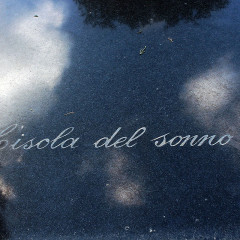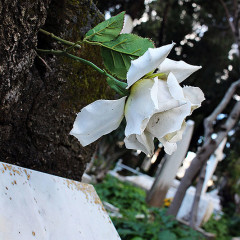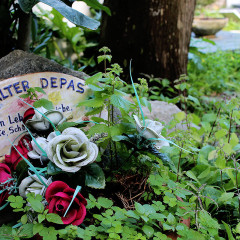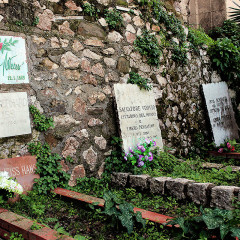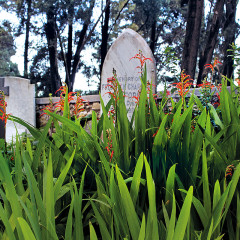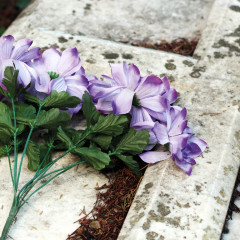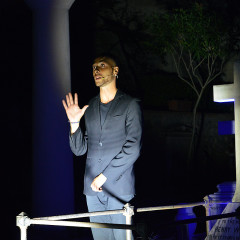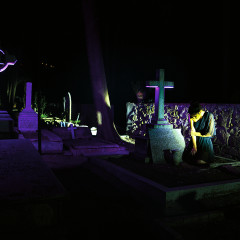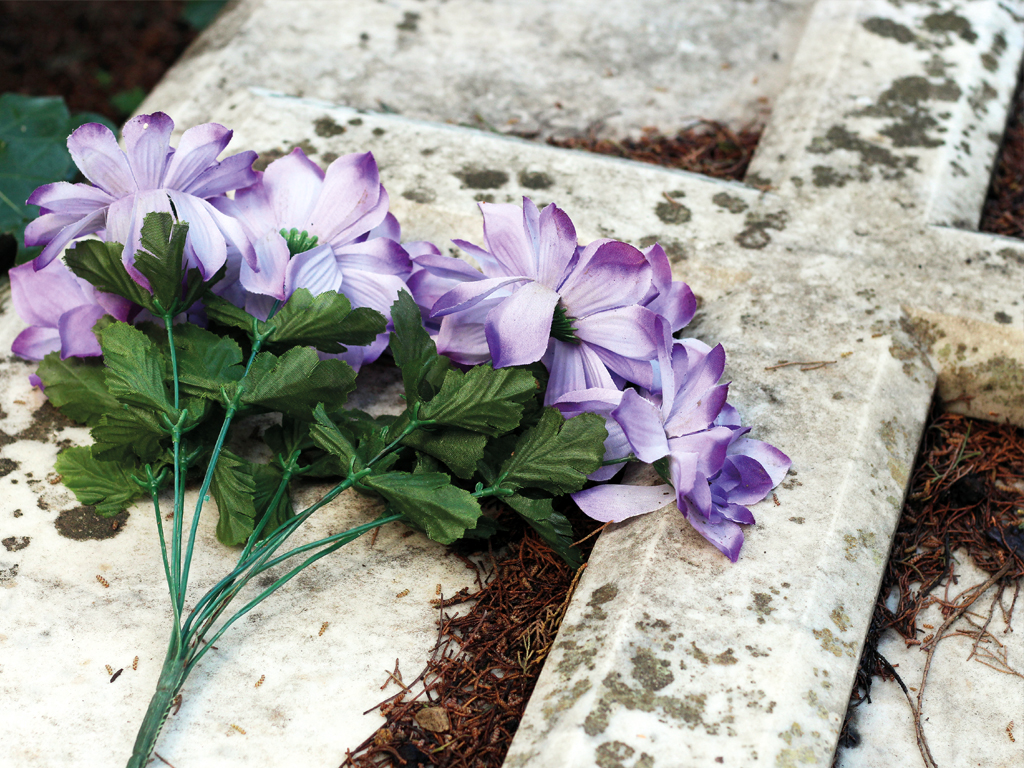
Una notte al cimitero
Un modo diverso per visitare il giardino della memoria e scoprire frammenti preziosi del passato di Capri è lo spettacolo “There is no death” promosso dall’Assessorato alla Cultura ed Eventi della Città di Capri e organizzato da Nesea. Un percorso alla luce delle torce e della luna carico di suggestione e di spiritualità che ha come fil rouge il contrasto: luce e oscurità, emarginazione ed integrazione, straniero e indigeno, cattolico e acattolico. Guidati da due attori e accompagnati dalla grazia danzante di una ballerina si possono rivivere le storie di artisti, poeti, scrittori e politici che scelsero l’isola come definitiva dimora e che hanno contribuito alla nascita del mito che l’ha resa famosa nel mondo. | A night at the cemetery. A different way to visit the garden of remembrance and discover precious pieces of Capri’s past is the performance titled “There is no death”, an initiative of the Assessor for Culture and Events for Capri, organized by NESEA. It’s a walk by torch-light and moonlight, full of fascination and spirituality, that takes contrast as its guiding theme: light and darkness, marginalization and integration, foreigner and native, Catholic and non-Catholic. Led by two actors and accompanied by the graceful dancing of a ballerina, visitors will be able to relive the stories of artists, poets, writers and politicians who chose the island as their final home and who contributed to the creation of the legend that has made Capri famous throughout the world.
Info: neseacapri.it
Un gioiello nascosto
di Silvia Baldassarre
Salendo dalla Marina Grande verso Capri, lì sulla destra dove la strada fa una curva a gomito e la pendenza aumenta leggermente, un cancello in metallo verde si apre su uno dei tanti gioielli dell’isola che forse ancora pochi conoscono. È il cimitero acattolico, un luogo dove la memoria incontra la poesia e insieme trasformano la morte in oblio.
Il cimitero, rispecchiando appieno lo spirito dell’isola, sin dalla sua fondazione nel 1878 ospita uomini e donne di ogni razza, religione, costume sociale e orientamento sessuale. È qui, su questa terrazza che si affaccia sul mare azzurro del Golfo di Napoli che tanti personaggi, più o meno famosi hanno trovato e il più delle volte scelto esilio e sepoltura.
Molti i tedeschi e gli inglesi come il suo fondatore George Hayward. E tante le persone che hanno contribuito ad alimentare il mito dell’isola come Lucio Amelio, Jaques Fersen, Norman Douglas e le sorelle Wolcott-Perry, ma anche personaggi della storia più recente come il pittore caprese Attilio Lembo che riposa in un angolo di isola che sembra uscito da uno dei suoi quadri.
Una magia si irradia da questo giardino della memoria legato alla sua isola meta da secoli di tanti “ritorni”. C’è chi l’ha eletta propria dimora, chi torna periodicamente per brevi o lunghi periodi, e c’è chi ha deciso di rimanerci tutta la vita, anche quella ultraterrena. E sono tanti e tutti uniti da un grande amore e un richiamo ancor più forte verso Capri. Qui la magia è anche quella di trovare sempre un fiore fresco accanto a qualche tomba. Un caprese? Forse un turista? C’è un’aura di mistero su questa storia. Forse ogni persona che entra in questo luogo vuole lasciare un segno del proprio passaggio e lo fa ponendo un fiore o recitando una poesia. Qualcuno lascia anche una firma sul libro che dal 2005 è esposto nella cappella. A volte un grido di denuncia contro l’incuria, più spesso un pensiero di vicinanza per gli ospiti di questo cimitero che, per dirla con le parole di Edwin Cerio, è il «più delizioso luogo di sepoltura del mondo».
Il giardino della memoria
Dopo vent’anni dalla prima edizione, è stato dato nuovamente alle stampe il libro di Dieter Richter dedicato al cimitero acattolico di Capri (Il giardino della memoria, La Conchiglia Edizioni, euro 20). La seconda edizione trova un’isola completamente diversa da quella degli anni Novanta e con lei è cambiato anche il suo “giardino della memoria”. Per prima cosa il cimitero non è più in stato di totale abbandono poi, complice il tempo trascorso, la lista degli “ospiti” ha accolto nuovi nomi. Queste sono le motivazioni della ristampa, ma lo spirito del volume è rimasto lo stesso. Ogni pagina chiede al lettore di entrare e ammirare un luogo che, nonostante sia un cimitero, non ha nulla di macabro o di spaventoso. Inoltre, come spiega Raffaele La Capria nella presentazione, «soprattutto l’elenco delle persone che furono sepolte nel cimitero acattolico e le brevi didascalie dedicate alle loro vite toccano l’animo del lettore e gli rendono questo luogo quasi famigliare». | The garden of remembrance Twenty years after publication of the first edition, the book by Dieter Richter dedicated to the non-Catholic cemetery on Capri (Il giardino della memoria, La Conchiglia Edizioni, 20 euros) is being republished. The second edition finds itself on a totally different island from that of the 1990s, and the “Garden of Remembrance” has changed with it. First of all, the cemetery is no longer in a state of total abandonment, and secondly, with the passing of time, some new names have been added to the list of “guests”. These are the reasons for reprinting it, but the spirit of the book has remained the same. Every page invites the reader to enter and admire a place that, despite being a cemetery, has nothing macabre or frightening about it. Moreover, as Raffaele La Capria explains in her presentation, “it is above all the list of people buried in the non-Catholic Cemetery, and the brief information about their lives, that touch the soul of the reader and make this almost a family place.”
A hidden jewel
by Silvia Baldassarre
As you climb up from Marina Grande towards the town of Capri, on the right where there is a hairpin bend in the road and the incline becomes a little steeper, is a green metal gate that opens onto one of the island’s many jewels, still perhaps unknown to many people. It’s the non-Catholic cemetery, a place where memory meets poetry and together they transform death into oblivion.
Since it was founded in 1878, the cemetery has been host to men and women of all races, religions, social traditions and sexual orientation, fully respecting the spirit of the island. It is here, on this terrace overlooking the blue sea of the Gulf of Naples, that many people, famous or not, have found, and in most cases chosen, their exile and burial place.
Among them are many Germans and British, such as the founder George Hayward. And there are many people who have contributed to the growth of the legend of Capri, such as Lucio Amelio, Jacques Fersen, Norman Douglas and the Wolcott-Perry sisters, as well as more recent characters from history such as the Capri artist Attilio Lembo, who rests in a corner of the island that could have stepped out of one of his paintings.
A magic radiates from this garden of remembrance, bound to an island that has been the destination of so many “homecomings”over the centuries. There are those who have made Capri their home, those who return periodically for short or long periods, and those who have decided to stay here their whole lives, including in the afterlife. And all of them are united by their great love and the even stronger pull of Capri. Another magical thing about this place is that you always find a fresh flower beside one or other of the tombs. Has it been left by someone from Capri? Or maybe a tourist? There’s an aura of mystery about it. Perhaps everyone who comes here wants to leave something to mark their visit and does so by leaving a flower or reciting a poem. Some also leave their signatures in a book that has been displayed in the chapel since 2005. Sometimes it is an indignant protest about the neglect of the garden, but more often it expresses a touching thought for the guests lying in this cemetery, described by Edwin Cerio as “the most enchanting burial place in the world”.






